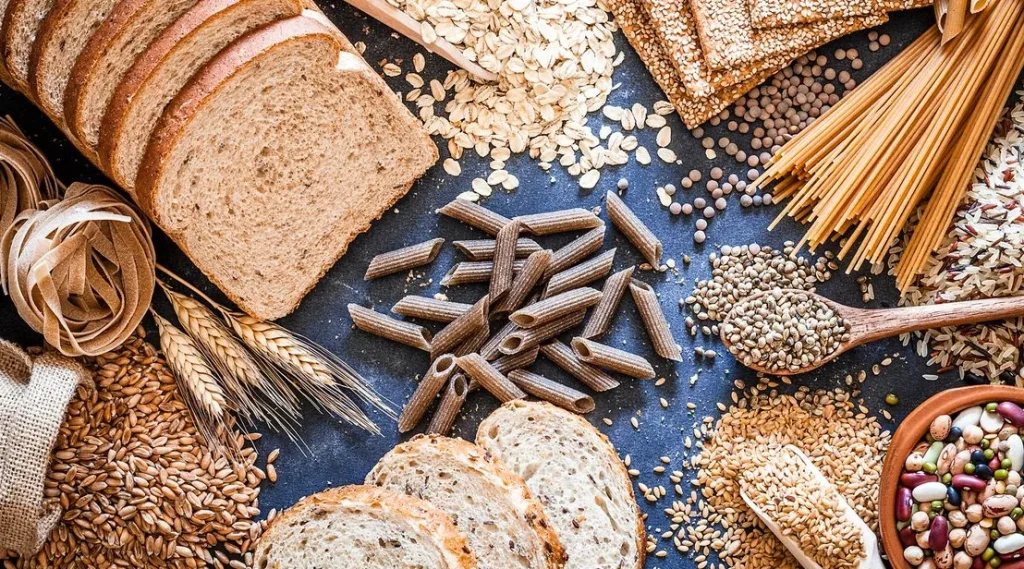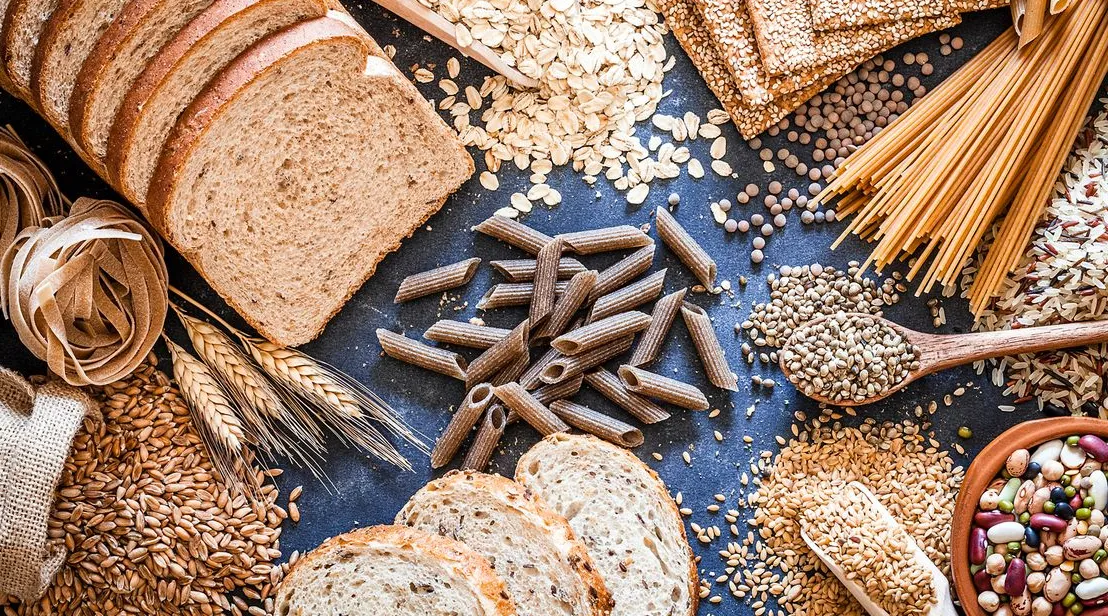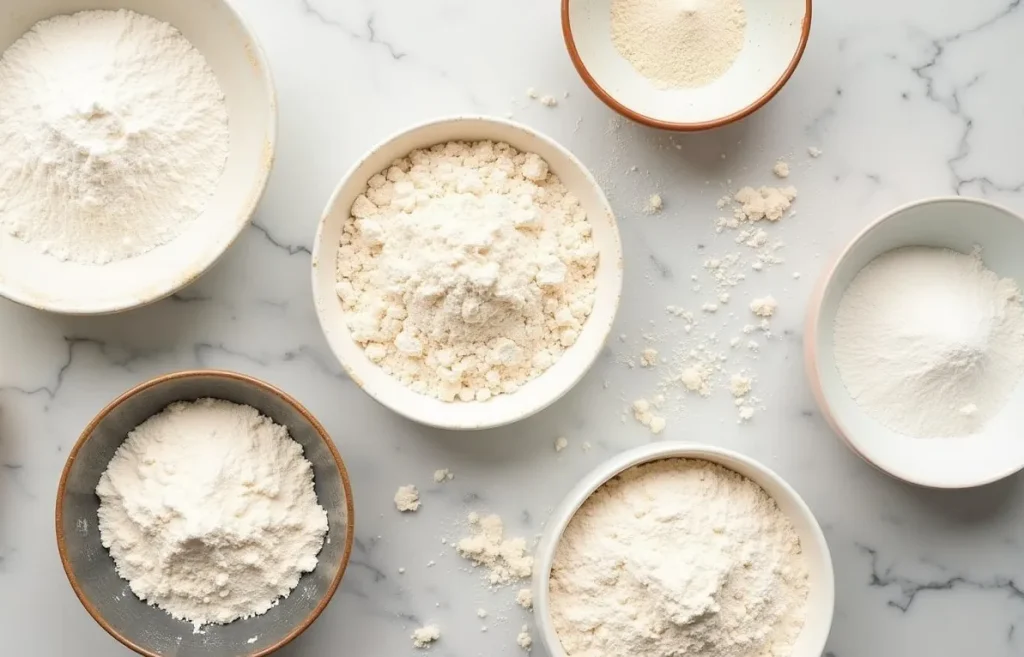The Science of Gluten: Why Some Recipes Say ‘Don’t Overmix’
Every home baker has encountered those mysterious recipe warnings: “Don’t overmix the batter” or “Mix until just combined.”
These instructions might seem arbitrary, but they represent fundamental food science principles that separate tender, fluffy baked goods from dense, chewy disasters.
Understanding gluten formation explains why following these mixing guidelines transforms your baking results from mediocre to magnificent.


What Exactly Is Gluten?
Gluten forms when two proteins naturally present in wheat flour glutenin and gliadin combine with water and undergo mechanical action like mixing or kneading.
Glutenin provides elasticity and strength to dough, while gliadin contributes to extensibility and flow. Together, they create gluten’s characteristic stretchy, web-like network that traps gases and provides structure to baked goods.
This protein network acts like microscopic scaffolding throughout your batter or dough. The more you mix, the more developed this network becomes.
The Double-Edged Nature of Gluten Development
Gluten development serves different purposes depending on what you’re baking. Bread requires extensive gluten development to create its chewy texture and ability to rise dramatically.
Professional bakers knead bread dough for 8-15 minutes specifically to develop strong gluten networks that trap carbon dioxide from yeast fermentation.
However, quick breads, muffins, pancakes, and cakes demand minimal gluten development. These baked goods rely on tenderness rather than chewiness for their appeal.
Overmixing these batters creates tough, rubbery textures that completely contradict their intended eating experience.
The Science Behind “Just Combined”
When recipes instruct you to mix “until just combined,” they’re asking you to achieve ingredient incorporation while minimizing gluten formation.
This technique preserves the tender crumb structure that makes muffins fluffy and cakes light. The goal involves bringing ingredients together without activating excessive protein development.
Professional bakers use specific mixing methods to control gluten formation. The muffin method combines dry ingredients separately from wet ingredients, then gently folds them together with minimal strokes.
This approach ensures even distribution while preventing overdevelopment of gluten networks.
Visual Cues for Proper Mixing
Recognizing when batter reaches the “just combined” stage requires understanding visual indicators rather than relying solely on time or stroke counts.
Properly mixed muffin batter appears lumpy and slightly rough, with small pockets of dry flour still visible. The mixture should look barely moistened rather than smooth and uniform.
Overmixed batter becomes smooth, glossy, and often develops visible streaks from gluten strands. The texture transforms from rough and craggy to sleek and elastic.
These visual changes signal that gluten networks have developed beyond the desired level for tender baked goods.
Temperature’s Role in Gluten Formation
Temperature significantly affects gluten development rates during mixing. Warmer ingredients accelerate protein activation, while cooler temperatures slow the process.
Many professional bakers keep ingredients slightly cool when making tender baked goods. This temperature control provides additional insurance against accidental overmixing.
Cold butter in muffin recipes serves dual purposes: it creates steam pockets during baking for extra lift, and it moderates gluten development during mixing.
Room temperature ingredients work better for recipes requiring some gluten development, like yeasted breads and pizza doughs.
The Chemistry of Different Flours

All-purpose flour contains moderate protein levels (10-12%) that balance versatility with control. This protein content allows for both tender quick breads and moderately chewy yeast breads.
Bread flour contains higher protein levels (12-14%) specifically designed for extensive gluten development. Using bread flour in muffin recipes virtually guarantees tough results, even with careful mixing.
Cake flour contains lower protein levels (7-9%) that naturally limit gluten formation. This flour type provides built-in insurance against overmixing in delicate baked goods.
Pastry flour (8-10% protein) occupies the middle ground, offering more tenderness than all-purpose flour while maintaining enough structure for pastries and cookies.
Fat’s Protective Role
Fat molecules interfere with gluten formation by coating flour proteins and preventing their connection with water molecules. This phenomenon explains why rich batters tolerate more mixing than lean ones.
Butter, oil, and eggs create protective barriers around gluten-forming proteins. Recipes with higher fat content naturally resist toughening from overmixing.
The creaming method for cakes incorporates fat thoroughly before adding flour, creating this protective effect early in the mixing process.
However, even high-fat batters have limits. Excessive mixing can still break through fat barriers and activate unwanted gluten development.
Liquid Ratios and Mixing Tolerance
Wetter batters generally tolerate more mixing than drier ones because excess liquid dilutes protein concentration and reduces gluten formation potential.
Pancake batters, which contain high liquid ratios, can withstand more mixing than muffin batters with lower moisture content.
However, this tolerance has boundaries. Even liquid-heavy batters become tough and rubbery when mixed excessively.
The key involves understanding each recipe’s specific tolerance levels based on its ingredient ratios.
Common Overmixing Mistakes
Electric mixers cause frequent overmixing accidents because their power and speed accelerate gluten development beyond manual mixing rates.
Hand mixing provides better control over gluten formation, allowing bakers to feel texture changes as they occur.
Adding mix-ins like chocolate chips or nuts to already-mixed batter often triggers overmixing as bakers attempt to distribute additions evenly.
The solution involves folding mix-ins gently with a spatula rather than continuing to use mixers or vigorous stirring motions.
Professional Techniques for Perfect Mixing
Commercial bakeries employ specific folding techniques that maximize ingredient incorporation while minimizing gluten activation.
The “fold and turn” method involves lifting batter from the bottom of the bowl and gently folding it over the top, rotating the bowl quarter-turns between folds.
This technique ensures thorough mixing without the aggressive action that develops unwanted gluten networks.
Stopping mixing while small lumps remain seems counterintuitive but produces superior results in tender baked goods.
Salvaging Overmixed Batters
Once overmixing occurs, complete reversal becomes impossible because gluten networks cannot be “unmixed.” However, damage control techniques can minimize negative effects.
Resting overmixed batter for 15-30 minutes allows gluten strands to relax slightly, reducing some toughness in the final product.
Adding extra leavening agents can help create lift that counteracts density from gluten development.
Lowering oven temperatures and extending baking times can produce more even cooking and improved texture in compromised batters.
The Bottom Line
Understanding gluten science transforms baking from guesswork into predictable success. Following “don’t overmix” instructions respects the fundamental chemistry that determines texture in baked goods.
Recognizing visual cues, controlling ingredient temperatures, and using appropriate mixing techniques ensure consistently tender results.
The next time you encounter mixing warnings in recipes, remember that these instructions reflect scientific principles designed to optimize your baking outcomes. Respecting gluten’s power and knowing when to limit it separates exceptional home bakers from frustrated ones.